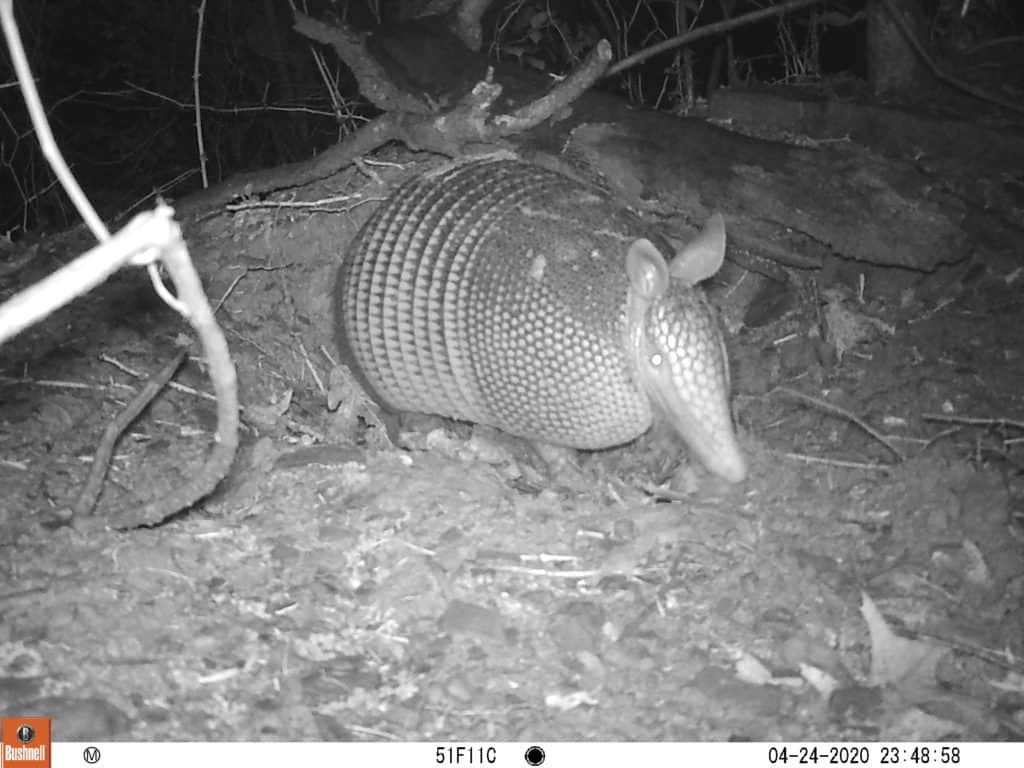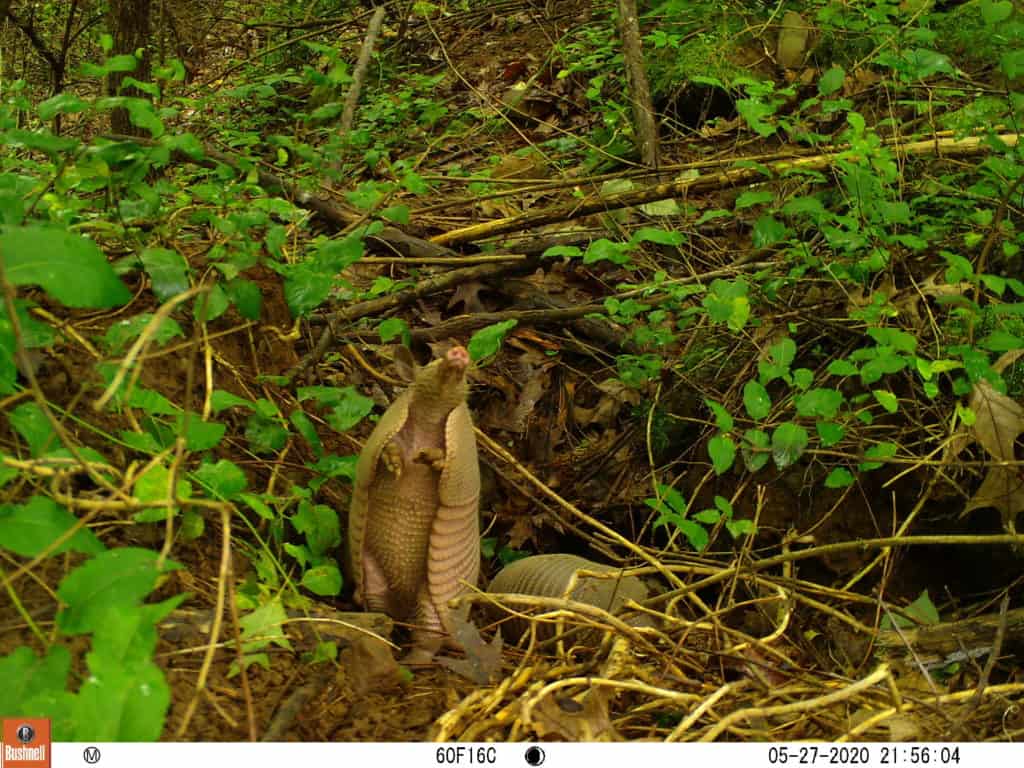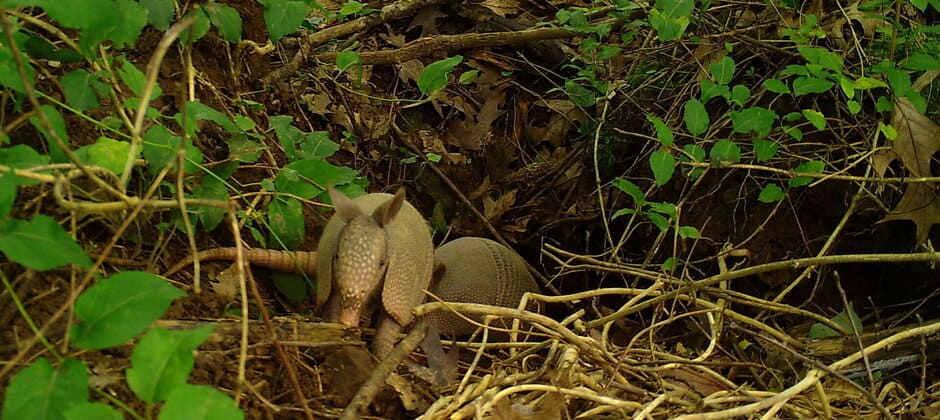Share this article
Human presence keeps armadillos up at night
Proximity to humans may be turning armadillos into night owls.
Nine-banded armadillos (Dasypus novemcinctus)—the only armadillo species found in the United States—are distributed widely across southern states. They are also naturally expanding their range northward into states where they weren’t previously common such as Virginia and North Carolina, where they are causing some horticultural problems. In Georgia, armadillos may have even damaged endangered coneflowers.
The armadillos have been found for millennia in states like Arkansas, but some people still see them as a nuisance when they dig up gardens and lawns in search of grubs and insects.
Brett DeGregorio, a TWS member and researcher with the U.S. Geological Survey’s Fish and Wildlife Cooperative Research Unit, has always loved these armored mammals, though.
DeGregorio said he has always been dismayed to see them viewed negatively by the wider population and wanted to improve the knowledge about how valuable they are to ecosystems. The burrows they dig can support a wide range of wildlife that also use these shelters such as red foxes (Vulpes vulpes), and gray foxes (Urocyon cinereoargenteus), opossums (Didelphis virginiana) and raccoons (Procyon lotor).
“We rightly praise gopher tortoises and prairie dogs for their roles as ecosystem engineers for digging burrows used by other wildlife, but the armadillo doesn’t get this type of positive attention,” DeGregorio said.

Nine-banded armadillos in Hyland Park. Credit: Brett DeGregorio
During his research on wildlife, DeGregorio noticed lots of armadillos were in some areas and nearly none in others. In the areas where he didn’t see them, he still sometimes came across their burrows.
In a study he led published recently in Ecology and Evolution, DeGregorio and his colleagues used a large network of trail cameras to learn more about these discrepancies in armadillo behavior in Arkansas.
They put clusters of trail cameras in 10 different natural areas in northwestern Arkansas around Fayetteville, the second biggest city in the state. Then, they looked at armadillo sightings on the cameras at different distances from the city. They also calculated the level of ambient human-related sound at each site.

Armadillo burrows can provide habitat for a number of other animals. Credit: Brett DeGregorio
Their results showed that depending on how far the site was from Fayetteville, the armadillos showed different activity patterns. In the wilder areas farther away from the city with less human sound, armadillos were much more active during the day.
“That’s where armadillos felt safe and comfortable being active during the day,” DeGregorio said.
But in the areas closer to the city, armadillos were mostly active late at night, presumably when humans weren’t around as much.
Armadillos are relatively comfortable in human areas—they can get by with small patches of natural areas and don’t mind digging up people’s lawns. But this research shows that they will still avoid humans as much as they can in these areas.
“I’m sure that relates to perceived safety,” DeGregorio said.
Armadillos that switch their behavior to be active at night may do so at their own detriment, though. DeGregorio said the species isn’t tolerant of colder nighttime temperatures, taking days to recover from cold snaps. But the arthropods they forage for are also harder to reach when it’s colder—they dig themselves deeper into the soil.
Aside from cooler nighttime temperatures, predators like great horned owls (Bubo virginianus) or cougars (Puma concolor) may be around more after dark.
“There’s not too many things that prey on armadillos, but those things are active at night,” DeGregorio said. “This shift to nocturnal existence certainly comes with costs.”
He added that other creatures that have adapted to urban areas like bobcats (Lynx rufus) or opossums likely show similar shifts in behavior as armadillos. As a result, he said that wildlife managers might consider closing urban parks for several hours a day, or on certain days of the week, to improve the quality of the habitats for the wildlife that lives there.
“These suburban and urban nature reserves, many of these animals can exist there, but it’s probably not optimal for them,” he said.
Header Image: Nine-banded armadillos in Hyland Park. Credit: Brett DeGregorio








